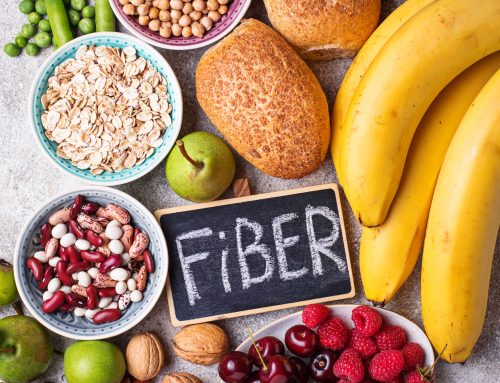Are you wondering why are fried foods bad for you? They taste so good. Is it just the oil?
Deep frying is a common cooking method used across the globe. It’s often used by restaurants and fast-food chains as a quick and inexpensive way to prepare foods. Popular fried foods include fish, French fries, chicken strips and cheese sticks, although you can deep fry just about anything.
Many people like the taste of fried foods. Yet these foods tend to be high in calories and trans fat, so eating a lot of them can have negative effects on your health.
For starters, fried foods are typically coated in batter or flour prior to frying. Furthermore, when foods are fried in oil, they lose water and absorb fat, which further increases their calorie.
Generally speaking, fried foods are significantly higher in fat and calories than their non-fried counterparts.
• For example, one small baked potato (100 grams) contains 93 calories and 0.13 grams of fat, while the same amount (100 grams) of French fries contain 312 calories and 15 grams of fat.
• As another example, a 100-gram filet of baked cod contains 105 calories and 1 gram of fat, while the same amount of deep-fried fish contains 200 calories and 10 grams of fat.
As you can see, calories add up quickly when eating fried foods.
Why are Fried Foods Bad for You?
Fried foods are typically high in trans fats
Trans fats are formed when unsaturated fats undergo a process called hydrogenation. Food manufacturers often hydrogenate fats using high pressure and hydrogen gas to increase their shelf life and stability, but hydrogenation also occurs when oils are heated to very high temperatures during cooking.
The process changes the chemical structure of fats, making them difficult for your body to break down, which can ultimately lead to negative health effects.
In fact, trans fats are associated with an increased risk of many diseases, including heart disease, cancer, diabetes and obesity. Since fried foods are cooked in oil at extremely high temperatures, they are likely to contain trans fats.
What’s more, fried foods are often cooked in processed vegetable or seed oils, which may contain trans fats prior to heating. One US study on soybean and canola oils found that 0.6–4.2% of their fatty acid contents were trans fats. When these oils are heated to high temperatures, such as during frying, their trans fat content can increase.
In fact, one study found each time an oil is re-used for frying, its trans fat content increases. However, it’s important to distinguish between these artificial trans fats and trans fats that occur naturally in foods like meat and dairy products. These have not been shown to have the same negative effects on health as those found in fried and processed foods.
Eating fried foods may increase your risk of disease
Several studies in adults have found an association between eating fried foods and the risk of chronic disease.
Generally speaking, eating more fried foods is associated with a greater risk of developing type 2 diabetes, heart disease and obesity.
Heart Disease
Eating fried foods may contribute to high blood pressure, low “good” HDL cholesterol and obesity, which are all risk factors for heart disease. In fact, two large observational studies found that the more often people ate fried foods, the greater their risk of developing heart disease.
One study found that women eating one or more servings of fried fish per week had a 48% higher risk of heart failure, compared to those who consumed 1–3 servings per month.
On the other hand, increased baked or broiled fish intake was associated with a lower risk. Another observational study found that a diet high in fried foods was associated with a significantly higher risk of heart attack. Meanwhile, those who ate a diet high in fruits and vegetables were at a significantly lower risk.
Diabetes
Several studies have found that eating fried foods puts you at a higher risk of developing type 2 diabetes. One study found that people who ate fast food more than two times per week were twice as likely to develop insulin resistance, compared to those who ate it less than once a week.
Furthermore, two large observational studies found a strong association between how often participants ate fried food and the risk of type 2 diabetes.
Those consuming 4–6 servings of fried food per week were 39% more likely to develop type 2 diabetes, compared to those consuming less than one serving per week.
Similarly, those who ate fried food seven or more times per week were 55% more likely to develop type 2 diabetes, compared to those consuming less than one serving per week.
Obesity
Fried foods contain more calories than their non-fried counterparts, so eating a lot of them can significantly increase your calorie intake.
Furthermore, studies indicate that the trans fats in fried foods may play a significant role in weight gain, as they can affect the hormones that regulate appetite and fat storage.
A study in monkeys found that even in the absence of additional calories, trans fat consumption significantly increased belly fat. Thus, the problem may be the type of fat, rather than the amount of fat.
In fact, an observational study that reviewed the diets of 41,518 women over eight years found that increasing trans fat intake by 1% resulted in a weight gain of 1.2 pounds (0.54 kg) in normal-weight women. Among women who were overweight, a 1% increase in trans fat intake resulted in a weight gain of 2.3 pounds (1.04 kg) over the course of the study. Meanwhile, increases in monounsaturated and polyunsaturated fat intakes were not associated with weight gain.
Regardless of whether it’s because fried food is high in calories or trans fat, multiple observational studies have shown a positive association between its intake and obesity.
Fried foods may contain harmful acrylamide
Acrylamide is a toxic substance that can form in foods during high-temperature cooking, such as frying, roasting or baking. It is formed by a chemical reaction between sugars and an amino acid called asparagine.
Starchy foods like fried potato products and baked goods typically have higher concentrations of acrylamide. Animal studies have found that it poses a risk for several types of cancer.
However, most of these studies used very high doses of acrylamide, ranging from 1,000–100,000 times the average amount that humans would be exposed to through diet.
While a handful of human studies have investigated acrylamide intake, the evidence is mixed. One review found a modest association between dietary acrylamide in humans and kidney, endometrial and ovarian cancers. Other studies indicate that dietary acrylamide in humans is not related to the risk of any type of common cancer.
Click here to read more about why are fried foods bad for you.







